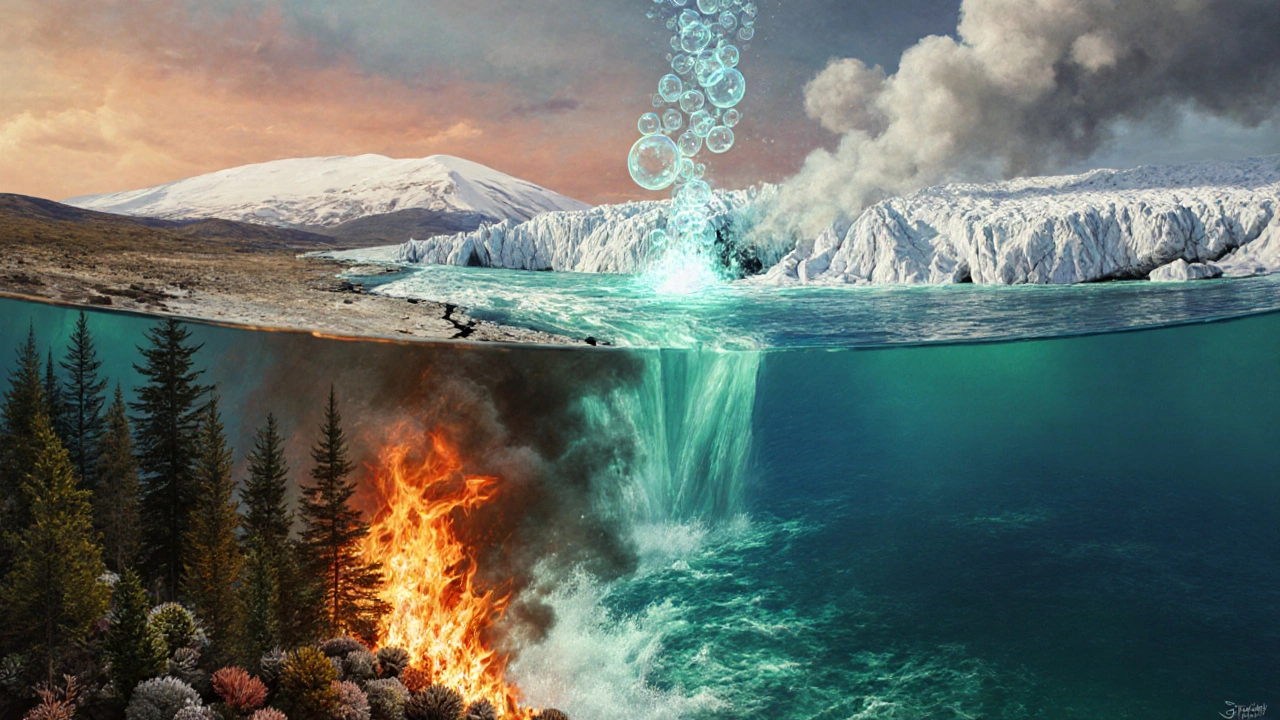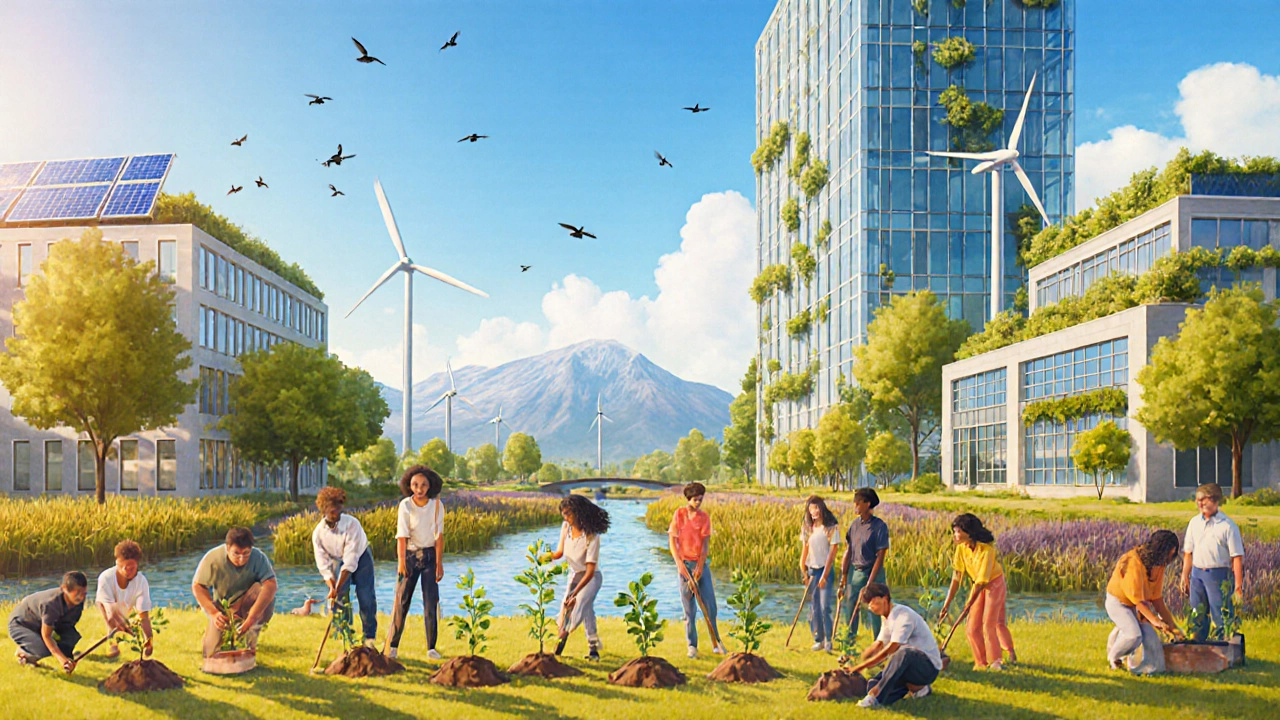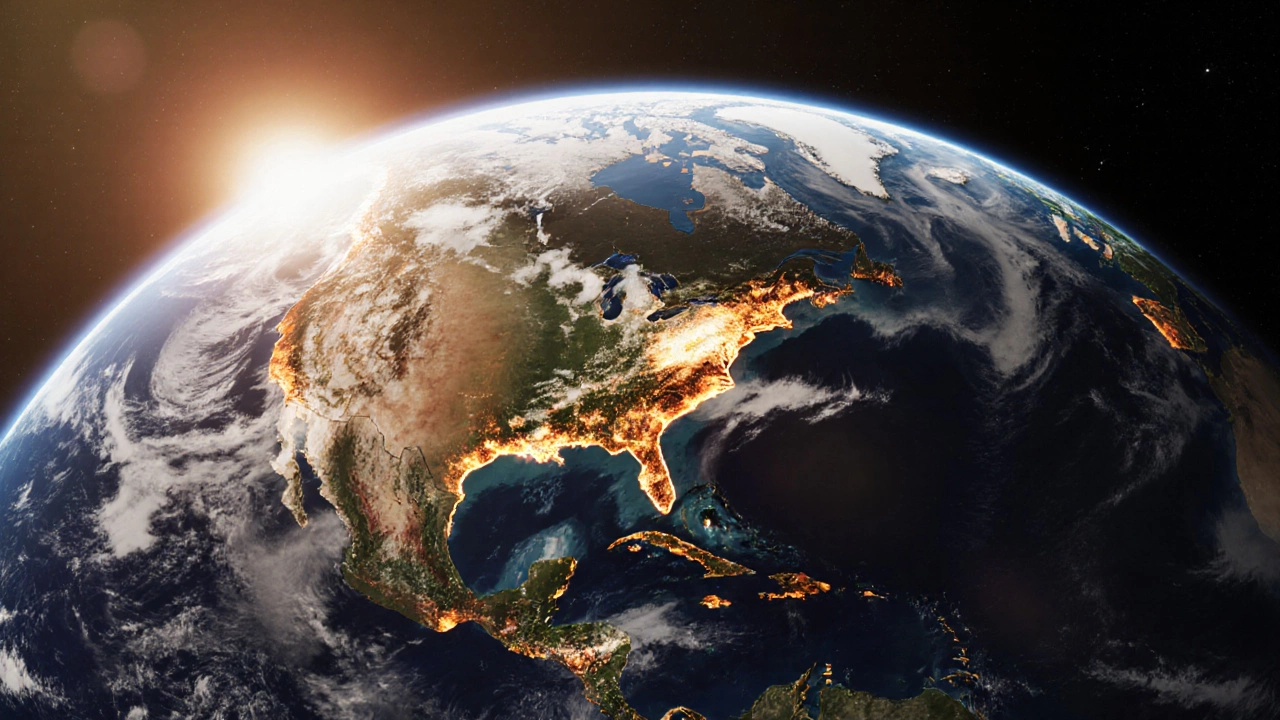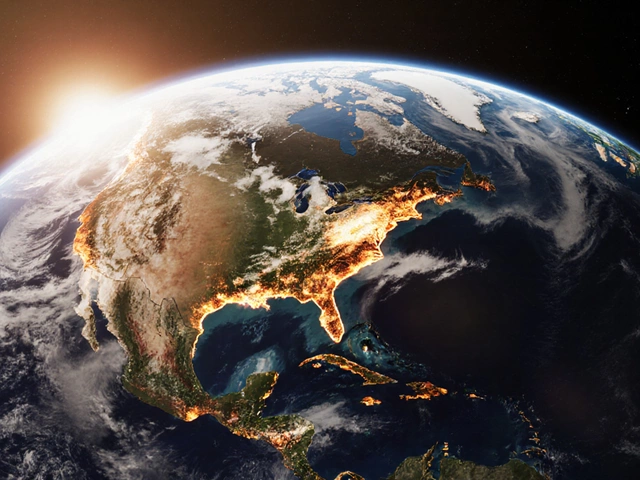Climate Footprint Calculator
Your Climate Impact Assessment
This calculator estimates your personal carbon footprint based on lifestyle choices. Your data helps identify areas where small changes can make a big difference in combating climate change.
Your estimated annual carbon footprint:
This is equivalent to
How to reduce your impact:
When you hear people argue about the greatest threat to earth, the conversation often circles back to a single, overwhelming force that touches every corner of the planet. It’s not a headline‑grabbing disaster that will happen tomorrow; it’s a slow‑burning crisis reshaping weather, ecosystems, and human societies. This article unpacks why that force tops the list, how it stacks up against other looming dangers, and what you can do right now to turn the tide.
Understanding the Core Threat: Climate Change
Climate change is the long‑term alteration of temperature and weather patterns caused primarily by human‑driven greenhouse gas emissions. By 2025, the Intergovernmental Panel on Climate Change (IPCC) reports that global average temperatures have already risen about 1.2 °C above pre‑industrial levels, and the planet is on track for a 1.5 °C increase within the next decade if emissions aren’t sharply cut. This shift is not just about hotter summers; it drives sea‑level rise, intensifies storms, disrupts agriculture, and forces species migrations.
Why Climate Change Outpaces Other Threats
Other environmental challenges-like habitat loss or plastic waste-are serious, but climate change amplifies them. Here’s how:
- Feedback loops: Melting permafrost releases methane, a potent greenhouse gas, accelerating warming.
- Global reach: Unlike a localized oil spill, climate impacts are felt on every continent and ocean.
- Economic ripple: The World Bank estimates that unchecked climate change could shave 5 % off global GDP by 2030.
Competing Threats That Still Matter
It’s tempting to write off other dangers when climate change dominates headlines, but they each add pressure to the planet’s fragile systems.
Biodiversity loss is the rapid decline in the variety of life on Earth, driven by habitat destruction, overexploitation, invasive species, and climate change. The UN’s Global Biodiversity Outlook 2024 warns that 1 million species face extinction within decades.
Deforestation is the clearing of forested land for agriculture, mining, and urban development. The World Resources Institute notes that 10 million hectares of forest vanish each year, stripping carbon sinks and displacing indigenous communities.
Plastic pollution is the accumulation of plastic debris in oceans, rivers, and soils, harming wildlife and entering the food chain. Recent estimates put 390 million tons of plastic in the ocean, with microplastics detected in 90 % of sea life samples.
Ocean acidification is the decrease in seawater pH caused by absorption of atmospheric CO₂, threatening coral reefs and shell‑forming organisms. Since the industrial era, the ocean’s pH has dropped by 0.1 units-a 30 % increase in acidity.
Air pollution is the presence of harmful substances like particulate matter and nitrogen oxides in the atmosphere, leading to health crises and ecosystem damage. The WHO links air pollution to 7 million premature deaths annually.
Nuclear conflict is the use of nuclear weapons in warfare, which could cause immediate catastrophic loss of life and long‑term climatic effects (nuclear winter). While unlikely, experts warn that even a limited exchange could drop global temperatures by several degrees for years.

Side‑by‑Side Comparison of Top Threats
| Threat | Primary Driver | Global Impact | Time Horizon | Mitigation Feasibility |
|---|---|---|---|---|
| Climate change | CO₂ and methane emissions | Temperature rise, sea‑level rise, extreme weather | Decades to centuries | High - Renewable transition, carbon capture |
| Biodiversity loss | Habitat destruction, overexploitation | Species extinction, ecosystem collapse | Immediate to long‑term | Medium - Protected areas, sustainable practices |
| Deforestation | Agricultural expansion, logging | Carbon sink loss, soil erosion | Current to near‑future | Medium - Reforestation, policy enforcement |
| Plastic pollution | Single‑use plastics, inadequate waste mgmt | Marine life harm, microplastic ingestion | Present and growing | Medium - Circular economies, bans |
| Ocean acidification | CO₂ absorption | Coral bleaching, shell‑forming species decline | Decades | Low - Requires CO₂ cuts |
| Air pollution | Fossil fuel combustion | Respiratory diseases, ecosystem acidification | Current | High - Cleaner fuels, emission standards |
| Nuclear conflict | Geopolitical tensions | Mass casualties, potential nuclear winter | Uncertain, low probability | Low - Disarmament treaties |
How Climate Change Fuels the Other Threats
Think of climate change as the master switch that turns up the volume on other dangers. Warmer oceans accelerate coral bleaching, which in turn reduces fish habitats-an indirect hit to food security. Shifting rain patterns make some farmland unviable, pushing farmers to clear more forest for crops, feeding the deforestation cycle. Heat waves intensify wildfires, releasing more carbon and ash that settle on water bodies, worsening pollution.
Practical Steps You Can Take Today
Feeling helpless is natural, but individual actions add up. Here’s a checklist that aligns with the biggest threat’s mitigation pathways:
- Slash personal carbon footprints: Switch to renewable electricity if your provider offers it, use public transport, and consider an electric vehicle.
- Support climate‑smart policies: Vote for leaders with strong net‑zero commitments, sign petitions for stricter emission standards.
- Adopt a plant‑forward diet: Reducing meat consumption cuts methane from livestock and lowers land‑use pressure.
- Offset responsibly: Invest in verified reforestation projects that have community backing and clear monitoring.
- Engage locally: Join or donate to environmental groups in your area-like the Wellington Climate Action Network-that run tree‑planting drives and community workshops.
Each step tackles a piece of the climate puzzle while also easing pressures on biodiversity, forests, and pollution.

What Governments and Corporations Must Do
Top‑down action determines whether we stay within safe climate limits. Key levers include:
- Price carbon: Implementing a robust carbon tax forces polluters to internalize climate costs.
- Accelerate clean energy deployment: Scale solar, wind, and emerging green hydrogen to replace coal and gas.
- Protect and restore ecosystems: Legal safeguards for old‑growth forests, mangroves, and peatlands lock away carbon for centuries.
- Invest in climate‑resilient infrastructure: Flood defenses, heat‑resistant buildings, and drought‑tolerant agriculture reduce future damages.
When policy and market signals align, the private sector follows-shifting investments from fossil fuels to sustainable technologies.
Key Takeaways
- Climate change is the single most powerful driver of planetary risk, amplifying every other environmental threat.
- Other dangers-biodiversity loss, deforestation, plastic waste, ocean acidification, air pollution, and nuclear conflict-remain serious but are often climate‑linked.
- Rapid emission cuts, renewable energy adoption, and ecosystem protection are the most effective levers.
- Individual actions matter when they combine with collective political pressure and corporate accountability.
- Monitoring progress through clear metrics (e.g., net‑zero targets, forest cover, plastic waste reduction) keeps us on track.
Frequently Asked Questions
Is climate change really the biggest threat, or is it just media hype?
Scientific consensus, backed by dozens of climate models and real‑world observations, shows that warming underpins more extreme weather, sea‑level rise, and ecosystem disruption than any single other factor. It also creates feedback loops that magnify other threats, making it the most comprehensive risk to the planet.
How fast do we need to cut emissions to avoid the worst outcomes?
The IPCC’s 2023 report calls for a 45 % reduction in global CO₂ emissions by 2030 compared with 2010 levels, and net‑zero by 2050. Delaying beyond 2030 makes staying under 1.5 °C virtually impossible.
Can planting trees really offset my carbon footprint?
Tree planting helps, but it’s not a silver bullet. Trees need space, water, and decades to lock carbon. Effective offsetting pairs tree projects with immediate emission cuts-otherwise you risk a false sense of security.
What role does plastic pollution play in climate change?
Producing plastic releases CO₂ and other greenhouse gases. Additionally, when plastic waste burns-whether intentionally or in wildfires-it adds more carbon to the atmosphere, linking waste management directly to climate emissions.
Is nuclear conflict still a realistic threat compared to climate issues?
While the probability of a large‑scale nuclear exchange is low, the potential climate impact (a “nuclear winter”) would be catastrophic. Hence, disarmament is a critical, albeit different, component of global risk management.
Understanding that climate change sits at the apex of environmental risk empowers us to target the root cause rather than treating symptoms. By coupling personal shifts with collective advocacy, we can steer the planet away from the brink.


